M17, Wings Of The Swan

M17, Wings of the Swan
More Posts from Night-hides-the-world and Others
The #HubbleTelescope captured these auroras on #jupiter caused by light waves interacting with the planet’s magnetic fields.
Solar System 10 Things: Looking Back at Pluto
In July 2015, we saw Pluto up close for the first time and—after three years of intense study—the surprises keep coming. “It’s clear,” says Jeffery Moore, New Horizons’ geology team lead, “Pluto is one of the most amazing and complex objects in our solar system.”
1. An Improving View

These are combined observations of Pluto over the course of several decades. The first frame is a digital zoom-in on Pluto as it appeared upon its discovery by Clyde Tombaugh in 1930. More frames show of Pluto as seen by the Hubble Space Telescope. The final sequence zooms in to a close-up frame of Pluto taken by our New Horizons spacecraft on July 14, 2015.
2. The Heart

Pluto’s surface sports a remarkable range of subtle colors are enhanced in this view to a rainbow of pale blues, yellows, oranges, and deep reds. Many landforms have their own distinct colors, telling a complex geological and climatological story that scientists have only just begun to decode. The image resolves details and colors on scales as small as 0.8 miles (1.3 kilometers). Zoom in on the full resolution image on a larger screen to fully appreciate the complexity of Pluto’s surface features.
3. The Smiles

July 14, 2015: New Horizons team members Cristina Dalle Ore, Alissa Earle and Rick Binzel react to seeing the spacecraft’s last and sharpest image of Pluto before closest approach.
4. Majestic Mountains

Just 15 minutes after its closest approach to Pluto, the New Horizons spacecraft captured this near-sunset view of the rugged, icy mountains and flat ice plains extending to Pluto’s horizon. The backlighting highlights more than a dozen layers of haze in Pluto’s tenuous atmosphere. The image was taken from a distance of 11,000 miles (18,000 kilometers) to Pluto; the scene is 780 miles (1,250 kilometers) wide.
5. Icy Dunes

Found near the mountains that encircle Pluto’s Sputnik Planitia plain, newly discovered ridges appear to have formed out of particles of methane ice as small as grains of sand, arranged into dunes by wind from the nearby mountains.
6. Glacial Plains

The vast nitrogen ice plains of Pluto’s Sputnik Planitia – the western half of Pluto’s “heart”—continue to give up secrets. Scientists processed images of Sputnik Planitia to bring out intricate, never-before-seen patterns in the surface textures of these glacial plains.
7. Colorful and Violent Charon

High resolution images of Pluto’s largest moon, Charon, show a surprisingly complex and violent history. Scientists expected Charon to be a monotonous, crater-battered world; instead, they found a landscape covered with mountains, canyons, landslides, surface-color variations and more.
8. Ice Volcanoes

One of two potential cryovolcanoes spotted on the surface of Pluto by the New Horizons spacecraft. This feature, known as Wright Mons, was informally named by the New Horizons team in honor of the Wright brothers. At about 90 miles (150 kilometers) across and 2.5 miles (4 kilometers) high, this feature is enormous. If it is in fact an ice volcano, as suspected, it would be the largest such feature discovered in the outer solar system.
9. Blue Rays

Pluto’s receding crescent as seen by New Horizons at a distance of 120,000 miles (200,000 kilometers). Scientists believe the spectacular blue haze is a photochemical smog resulting from the action of sunlight on methane and other molecules in Pluto’s atmosphere. These hydrocarbons accumulate into small haze particles, which scatter blue sunlight—the same process that can make haze appear bluish on Earth.
10. Encore

On Jan. 1, 2019, New Horizons will fly past a small Kuiper Belt Object named MU69 (nicknamed Ultima Thule)—a billion miles (1.5 billion kilometers) beyond Pluto and more than four billion miles (6.5 billion kilometers) from Earth. It will be the most distant encounter of an object in history—so far—and the second time New Horizons has revealed never-before-seen landscapes.
Make sure to follow us on Tumblr for your regular dose of space: http://nasa.tumblr.com.
Official video with credit where appropriate for the above images.
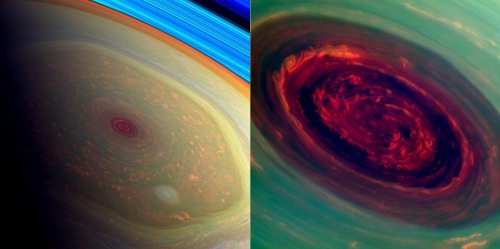
Saturn’s hexagonal storm system in it’s north pole

Commander Terry Virts posted video of his view. You may want to see this.

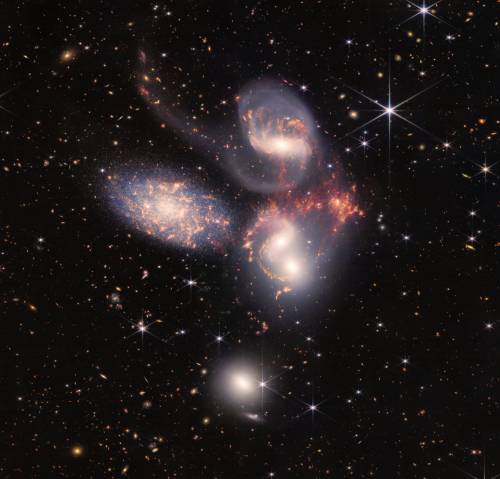
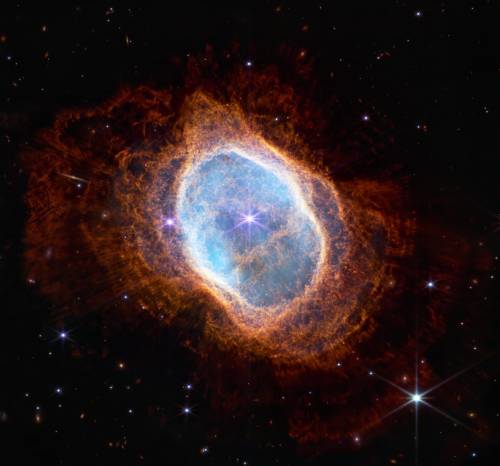
NASA’s Webb Space Telescope Reveals Astounding, Unprecedented Views of the Universe
With October just around the corner, NASA has released its latest Galaxy of Horrors posters. Presented in the style of vintage horror movie advertisements. As fun and creative as all three posters are, they're based on real phenomena. 🎃
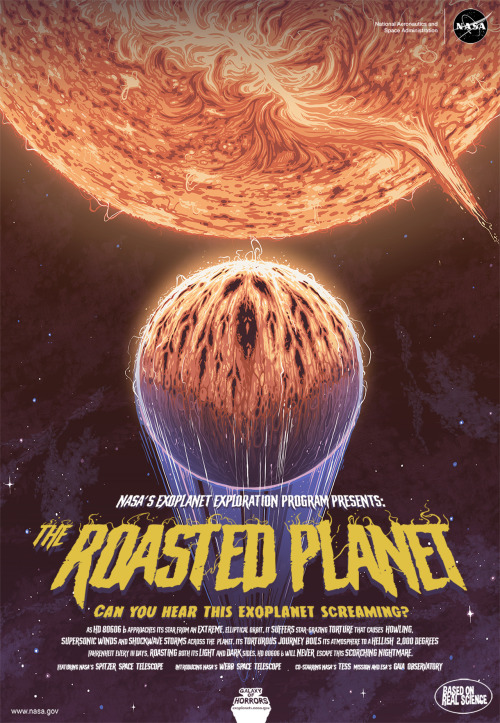
Can you hear this exoplanet screaming?
As HD 80606 b approaches its star from an extreme, elliptical orbit, it suffers star-grazing torture that causes howling, supersonic winds and shockwave storms across the planet. Its torturous journey boils its atmosphere to a hellish 2,000 degrees Fahrenheit every 111 days, roasting both its light and dark sides. HD 80606b will never escape this scorching nightmare.
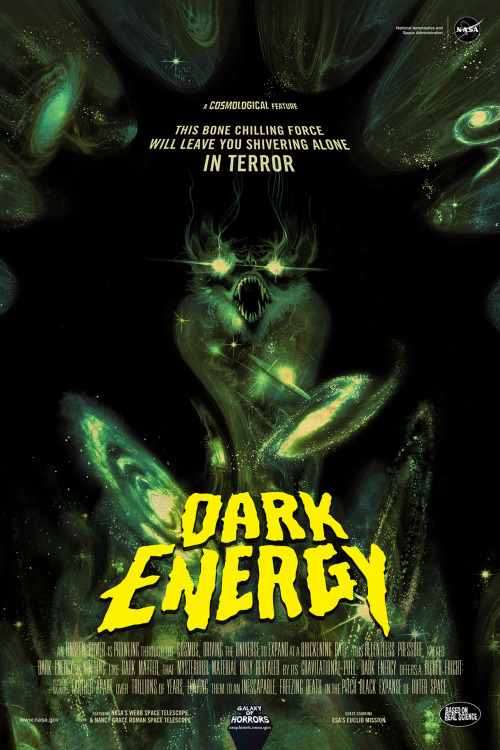
This bone-chilling force will leave you shivering alone in terror!
An unseen power is prowling throughout the cosmos, driving the universe to expand at a quickening rate. This relentless pressure, called dark energy, is nothing like dark matter, that mysterious material only revealed by its gravitational pull. Dark energy offers a bigger fright: pushing galaxies farther apart over trillions of years, leaving the universe to an inescapable, freezing death in the pitch black expanse of outer space.
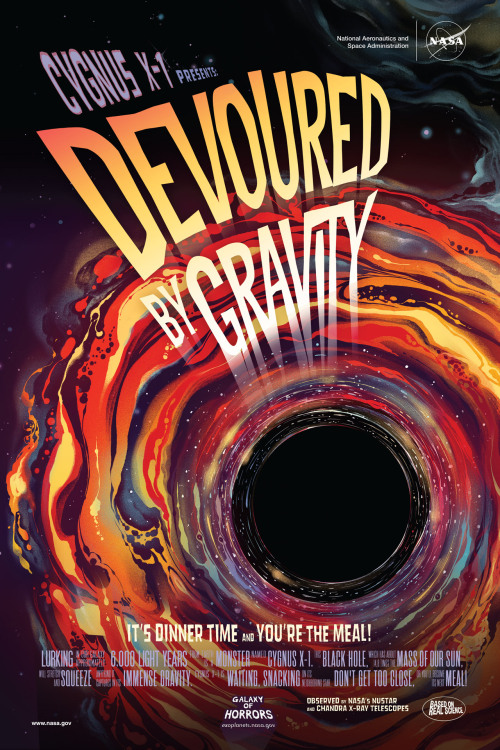
Cygnus X-1 Presents:
It’s Dinner Time and You’re The Meal!
Lurking in our galaxy, approximately 6,000 light-years from Earth, is a monster named CygnusX-1. This black hole, which has about 14.8 times the mass of our Sun, will stretch and squeeze anything it captures in its immense gravity. Cygnus X-1 is waiting, snacking on its neighboring star. Don’t get too close, or you’ll become its next meal!
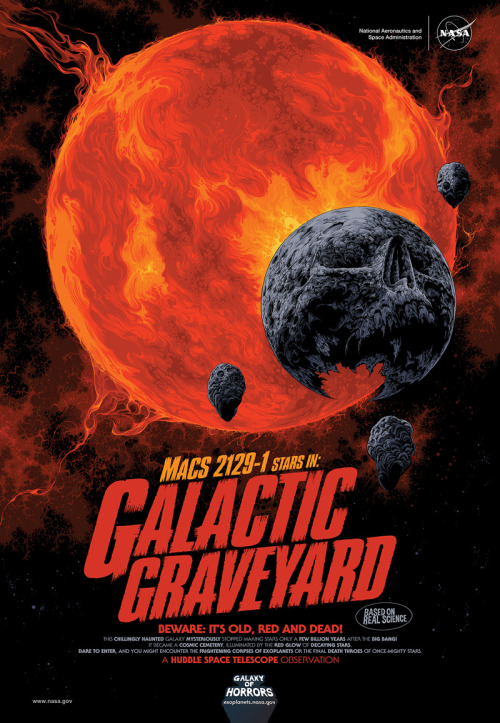
This chillingly haunted galaxy mysteriously stopped making stars only a few billion years after the Big Bang! It became a cosmic cemetery, illuminated by the red glow of decaying stars. Dare to enter, and you might encounter the frightening corpses of exoplanets or the final death throes of once-mighty stars.
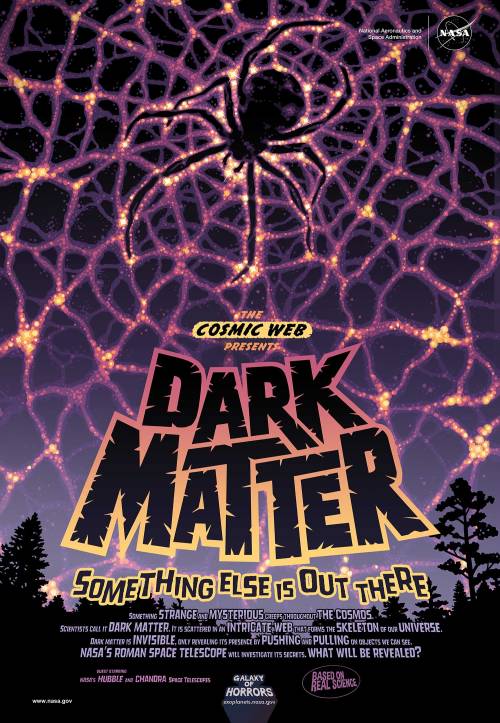
Something strange and mysterious creeps throughout the cosmos. Scientists call it dark matter. It is scattered in an intricate web that forms the skeleton of our universe. Dark matter is invisible, only revealing its presence by pushing and pulling on objects we can see. NASA’s Roman Space Telescope will investigate its secrets. What will be revealed?
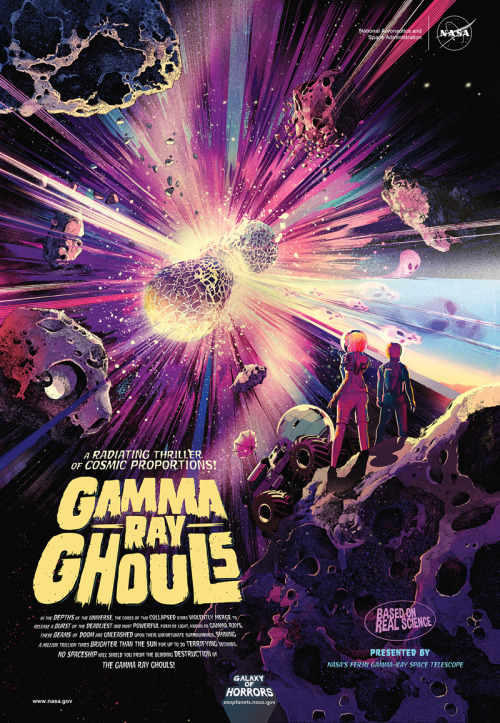
In the depths of the universe, the cores of two collapsed stars violently merge to release a burst of the deadliest and most powerful form of light, known as gamma rays. These beams of doom are unleashed upon their unfortunate surroundings, shining a million trillion times brighter than the Sun for up to 30 terrifying seconds. No spaceship will shield you from the blinding destruction of the gamma ray ghouls!
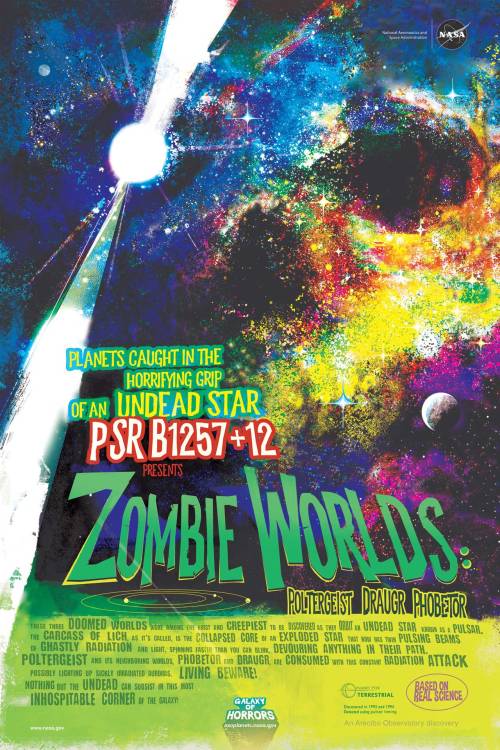
These doomed worlds were among the first and creepiest to be discovered as they orbit an undead star known as a pulsar. Pulsar planets like Poltergeist and its neighboring worlds, Phobetor and Draugr, are consumed with constant radiation from the star’s core. Nothing but the undead can subsist in this most inhospitable corner of the galaxy.
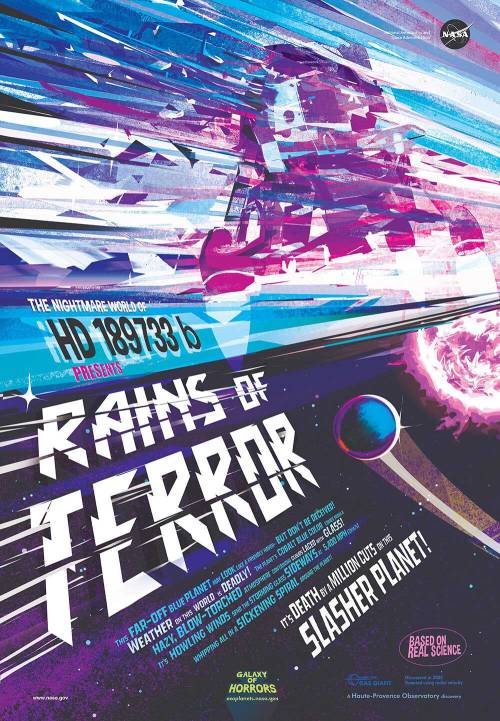
This far-off blue planet may look like a friendly haven – but don’t be deceived! Weather here is deadly. The planet’s cobalt blue color comes from a hazy, blow-torched atmosphere containing clouds laced with glass. Howling winds send the storming glass sideways at 5,400 mph (2km/s), whipping all in a sickening spiral. It’s death by a million cuts on this slasher planet!

Southern Tadpole © Logan Carpenter
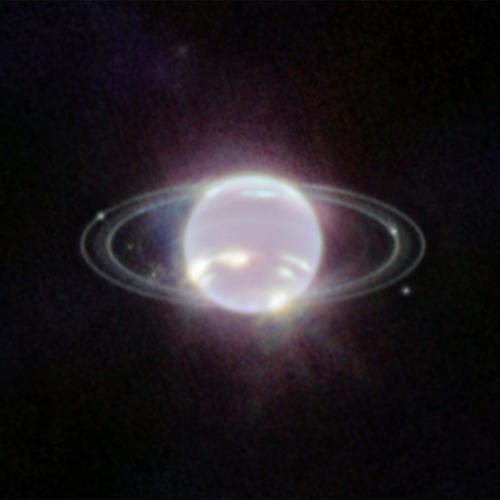
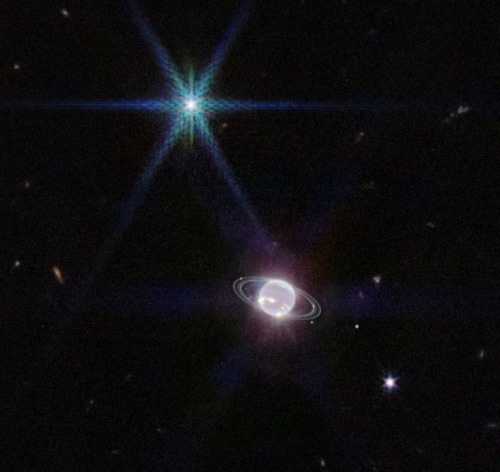
NASA released the clearest images of Neptune’s rings in over 30 years.
-
 guimagsp reblogged this · 2 months ago
guimagsp reblogged this · 2 months ago -
 merzbuilds liked this · 11 months ago
merzbuilds liked this · 11 months ago -
 ciupicup liked this · 1 year ago
ciupicup liked this · 1 year ago -
 nijaded88 reblogged this · 1 year ago
nijaded88 reblogged this · 1 year ago -
 plagueofmice liked this · 2 years ago
plagueofmice liked this · 2 years ago -
 lazd liked this · 2 years ago
lazd liked this · 2 years ago -
 mindnot-that-much liked this · 2 years ago
mindnot-that-much liked this · 2 years ago -
 deeperthingstofind reblogged this · 2 years ago
deeperthingstofind reblogged this · 2 years ago -
 killerpixel liked this · 2 years ago
killerpixel liked this · 2 years ago -
 haniartsblog liked this · 2 years ago
haniartsblog liked this · 2 years ago -
 ass33 liked this · 2 years ago
ass33 liked this · 2 years ago -
 paradise-restored reblogged this · 2 years ago
paradise-restored reblogged this · 2 years ago -
 sheliesshattered reblogged this · 2 years ago
sheliesshattered reblogged this · 2 years ago -
 triangleshadow liked this · 2 years ago
triangleshadow liked this · 2 years ago -
 tomswick reblogged this · 2 years ago
tomswick reblogged this · 2 years ago -
 archiloquies reblogged this · 2 years ago
archiloquies reblogged this · 2 years ago -
 jaimenieto3 reblogged this · 2 years ago
jaimenieto3 reblogged this · 2 years ago -
 peculiarperson1000 reblogged this · 2 years ago
peculiarperson1000 reblogged this · 2 years ago -
 peculiarperson1000 liked this · 2 years ago
peculiarperson1000 liked this · 2 years ago -
 kellybar reblogged this · 2 years ago
kellybar reblogged this · 2 years ago -
 witchaj reblogged this · 2 years ago
witchaj reblogged this · 2 years ago -
 cosmiicorvid reblogged this · 2 years ago
cosmiicorvid reblogged this · 2 years ago -
 cosmiicorvid liked this · 2 years ago
cosmiicorvid liked this · 2 years ago -
 starsgivemehp reblogged this · 2 years ago
starsgivemehp reblogged this · 2 years ago -
 kneltnotbowed reblogged this · 2 years ago
kneltnotbowed reblogged this · 2 years ago -
 mustiesb reblogged this · 2 years ago
mustiesb reblogged this · 2 years ago -
 greatbarrieryeet reblogged this · 2 years ago
greatbarrieryeet reblogged this · 2 years ago -
 lilacmuse reblogged this · 2 years ago
lilacmuse reblogged this · 2 years ago -
 t-wav liked this · 2 years ago
t-wav liked this · 2 years ago -
 mrprocrastin8 liked this · 2 years ago
mrprocrastin8 liked this · 2 years ago -
 zurgy-space reblogged this · 2 years ago
zurgy-space reblogged this · 2 years ago -
 lilacmuse liked this · 2 years ago
lilacmuse liked this · 2 years ago -
 little-flame-prince reblogged this · 2 years ago
little-flame-prince reblogged this · 2 years ago -
 travis0617 reblogged this · 2 years ago
travis0617 reblogged this · 2 years ago -
 travis0617 liked this · 2 years ago
travis0617 liked this · 2 years ago -
 omarcherif33 liked this · 2 years ago
omarcherif33 liked this · 2 years ago -
 armstronglimit liked this · 2 years ago
armstronglimit liked this · 2 years ago -
 jadegrimm liked this · 2 years ago
jadegrimm liked this · 2 years ago -
 lanemanandcoach liked this · 2 years ago
lanemanandcoach liked this · 2 years ago -
 tedromanto reblogged this · 2 years ago
tedromanto reblogged this · 2 years ago -
 entropic-principle reblogged this · 2 years ago
entropic-principle reblogged this · 2 years ago
Astronomy and the other wonders you witness when you look to the skies.
115 posts























